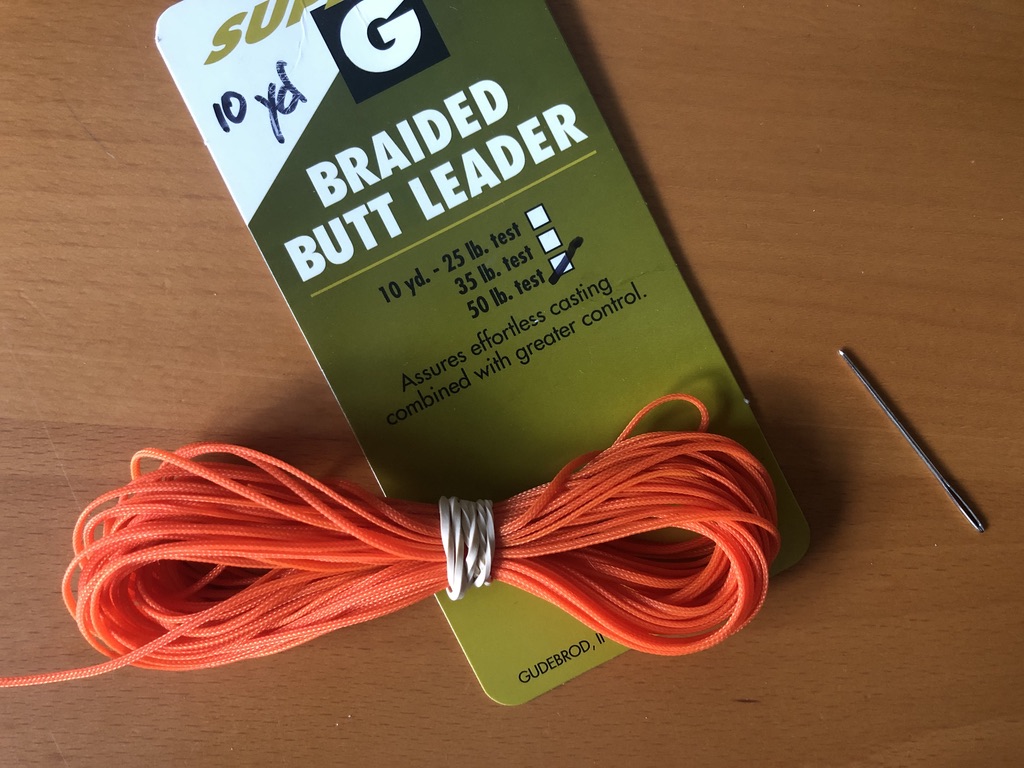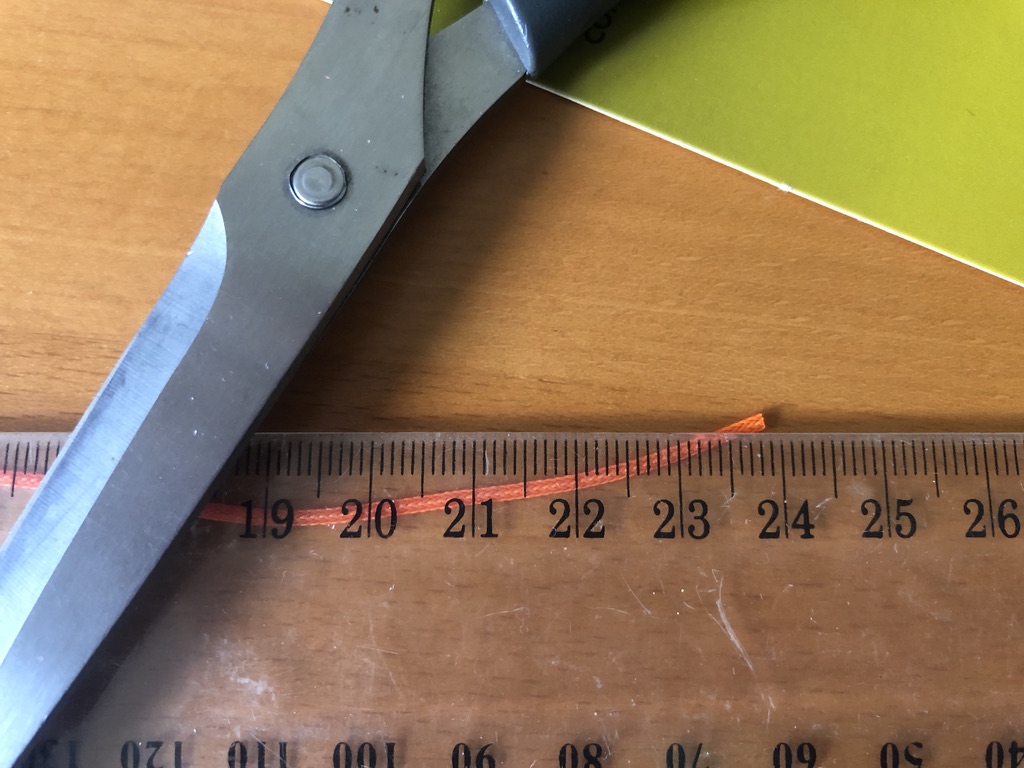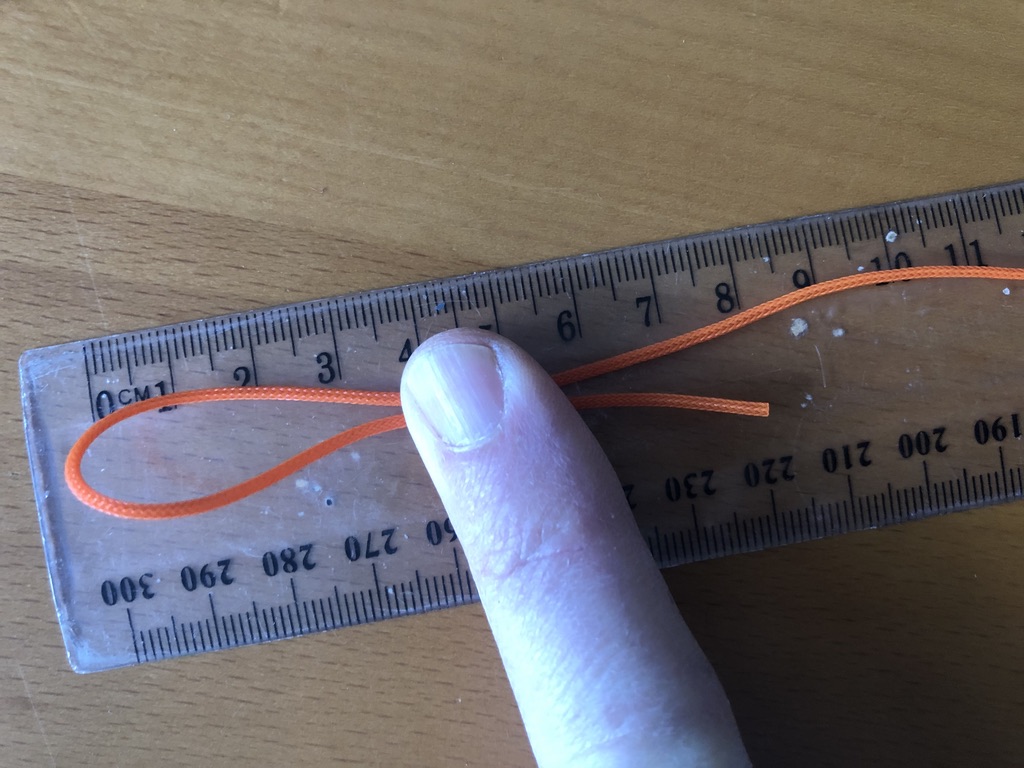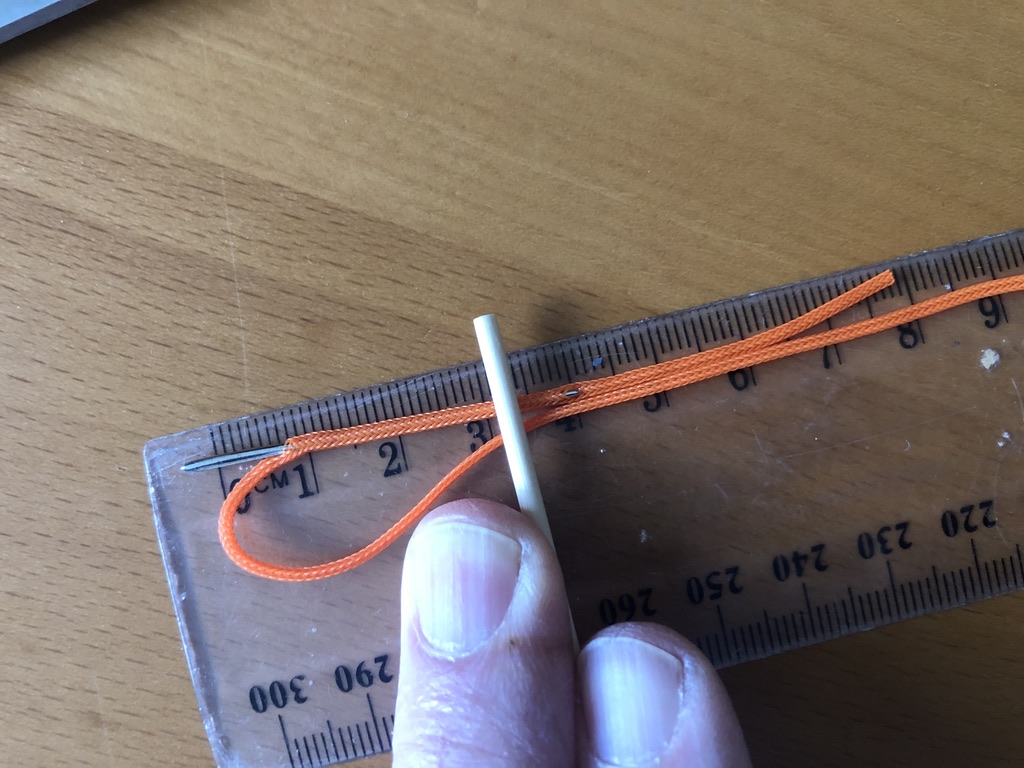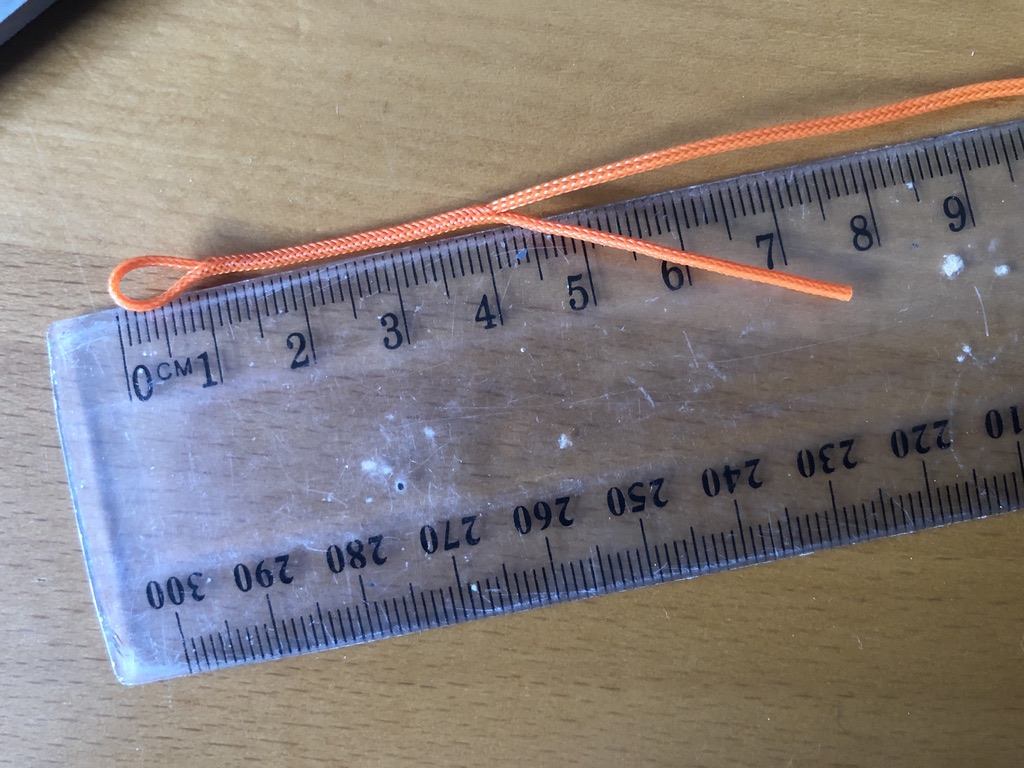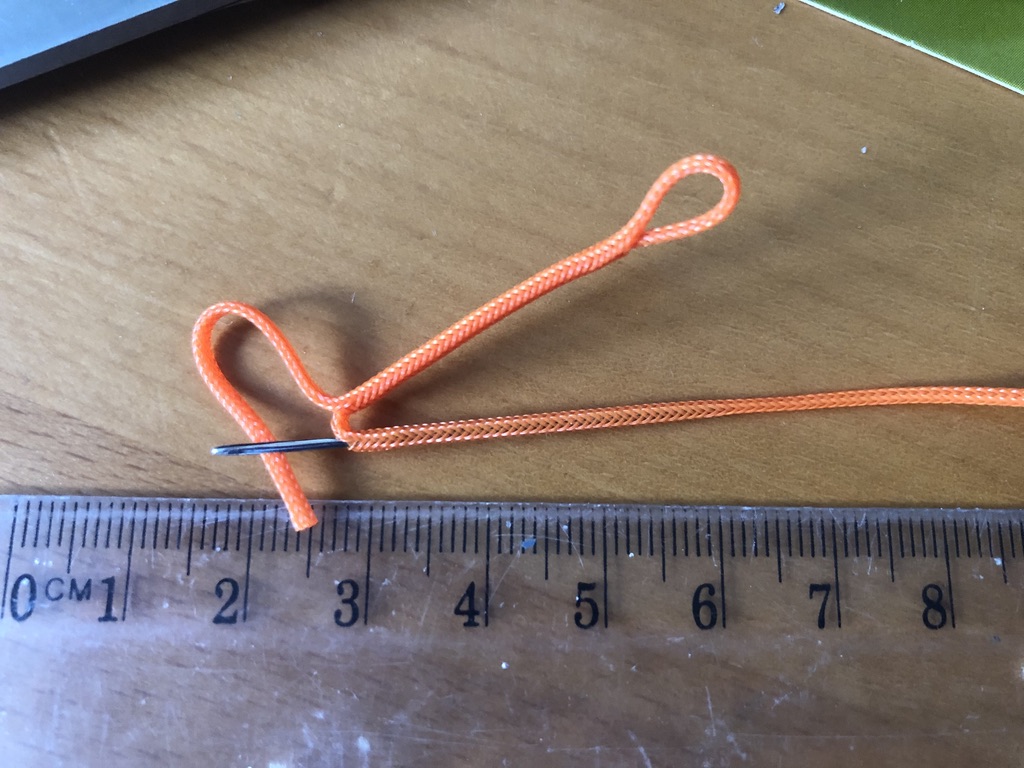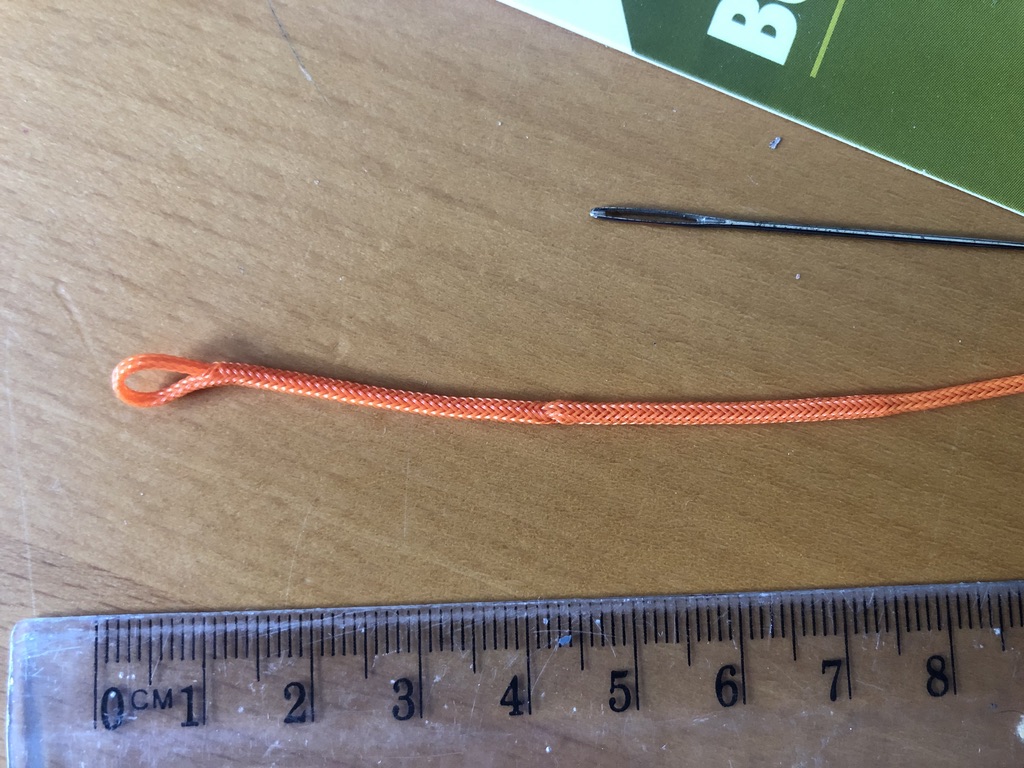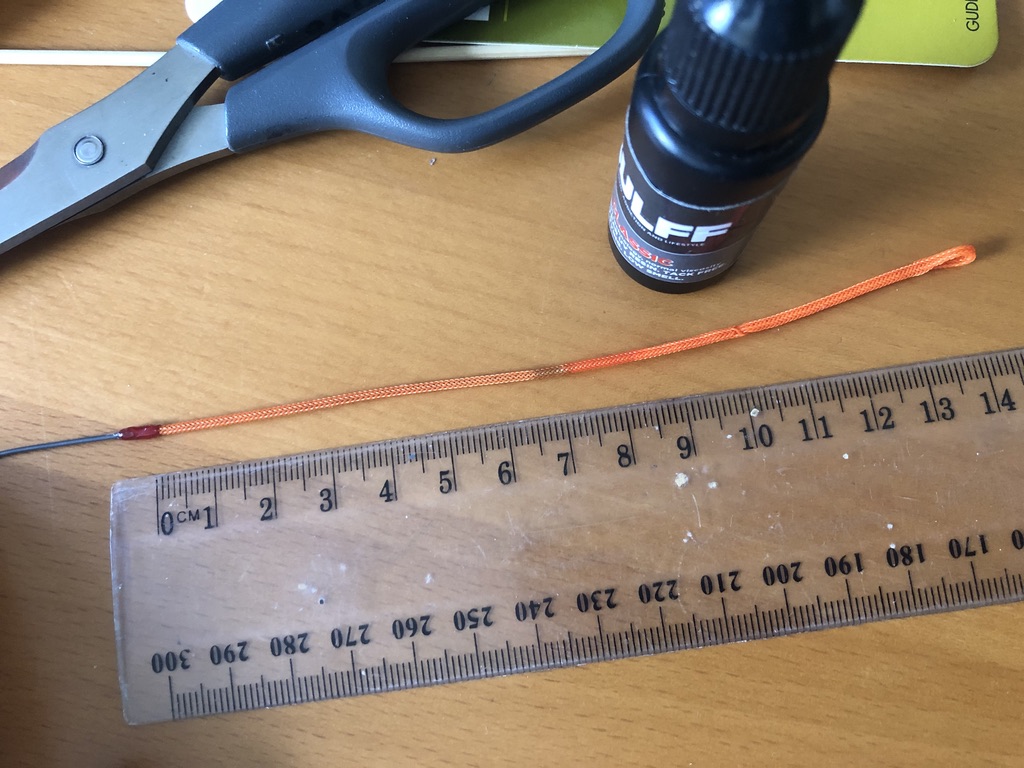Flyfishers eagerly anticipate the warmer weather, when the fish are ‘looking up’, in search of insects on the water surface. We carefully apply floatant to our flies, and do our best to dry them in between ‘drownings’ in the mouth of a fish, or the swirl of a turbulent stream. Eventually, despite our best efforts, dry flies transition to anything but dry, and have to be retired.
Not sure why, but a little while back, I had a bit of an idea about this. In the bottom of our laundry cupboard are a few different treatments we apply to gloves, jackets etc. to keep them dry. They’re pretty good stuff. What would happen, I mused, if I treated my flies with this stuff before I even hit the water?
Here, for your amusement, is what I did, and how I tested it.
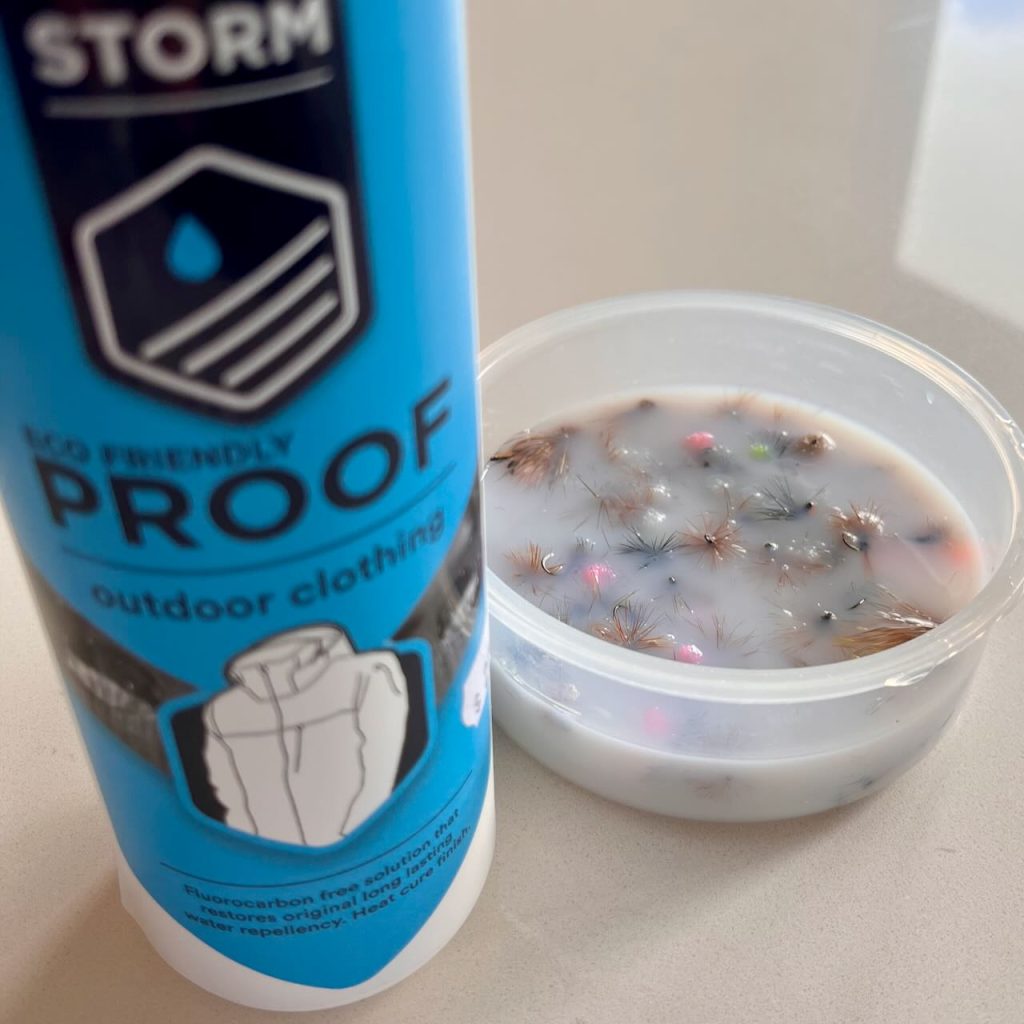
I mixed up a fairly strong solution of the waterproofing liquid (about a teaspoon to a cup of water), and soaked the flies for 10 minutes.
I dried them on paper towel in the sun, but these solutions recommend using a tumble dryer to ‘heat cure’ the treatment, so I put them in a 50° oven for 10 minutes. I just felt like that was a fair equivalent.
After drying, it was time to do a test. I’d kept an untreated one out as a control, and I put the two flies in a dish of water, and waited!
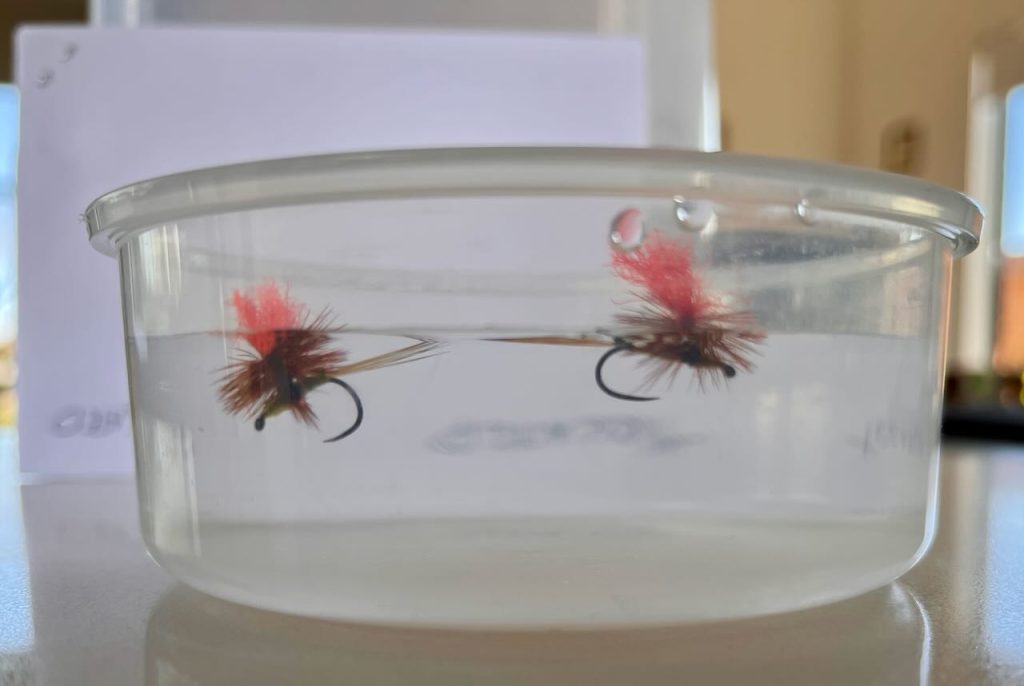
Actually, I waited quite a while. They were both bobbing around like corks for at least an hour! Eventually, though, it was clear the untreated one was slowly losing the battle. It wasn’t obvious from above the water, but from the side I could see that its whole body was under, with only the tip of the wing keeping it afloat.
The treated fly, on the other hand, still had most of its hackle above the surface, with the body only just sitting through the surface.
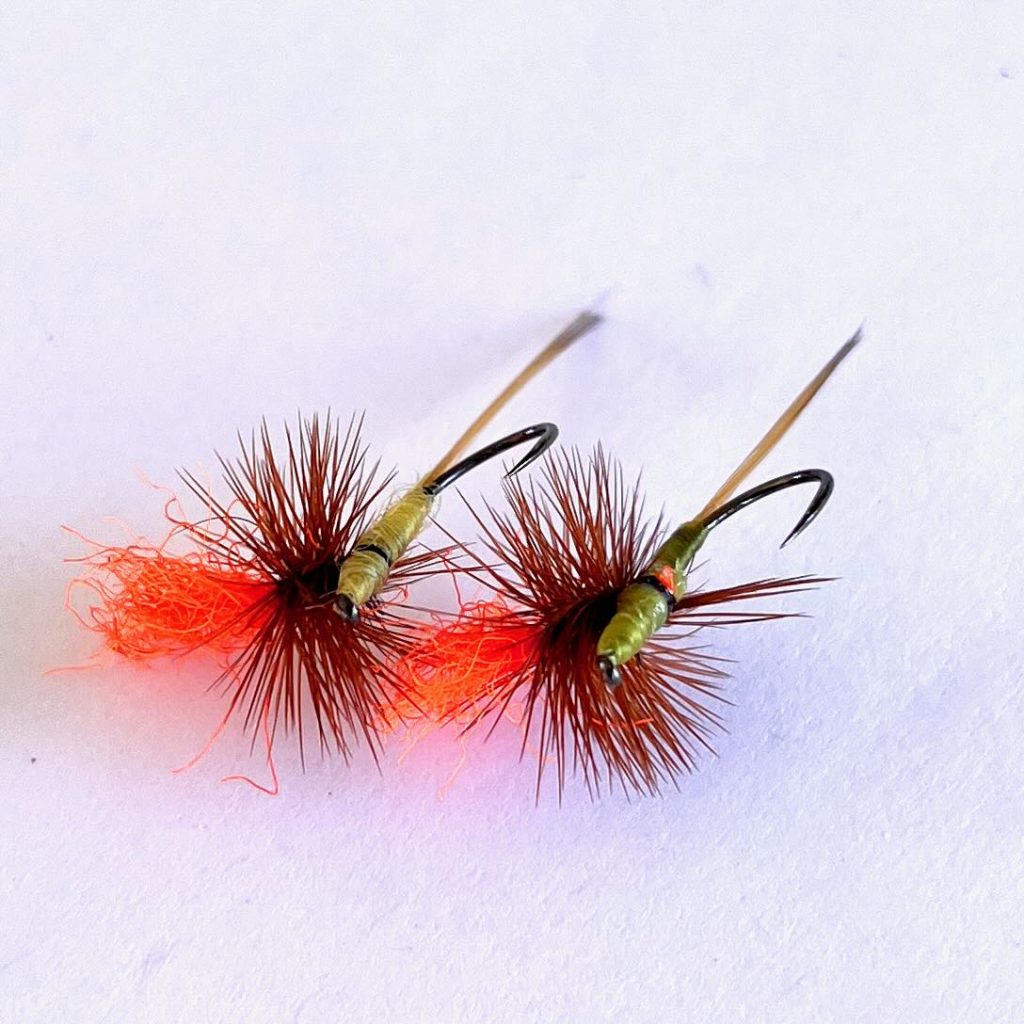
Even more telling was a close look at the flies themselves. After a shake – like you’d do to try giving a fly a quick dry out – the floss body of the treated fly was several shades lighter than the other, and looked dry, while the untreated fly looked waterlogged.
So, there you have it. Not very scientific, but I felt it was conclusive enough that I went on to treat everything in my box that I wanted to float. I’m hoping this summer I’ll spend more time fishing dry flies than I will applying treatments and trying to get them to stay afloat!
